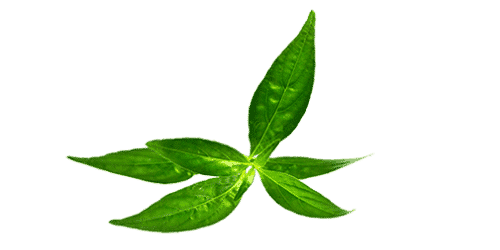
Origin
Originating from India or Sri Lanka, andrographis has been used for hundreds of years in ayurvedic medicine for treating fever and Chinese medicine for ridding the body of toxins. It is also cultivated in China, Thailand, and across South-East Asia.
Did you know?
Andrographis, also called “green chiretta” was studied in 1990 by Scandinavians. The Scandinavians found a principle active ingredient that is very effective for combating colds and mild respiratory tract infections.
Characteristics
This herbaceous plant can grow up to 1 metre in height. They are composed of green leaves and white or pale pink flowers with a purple blush. They are also full of lots of little yellow-coloured seeds. It is a plant with a very bitter taste.
Flowering and harvesting
Andrographis is cultivated mainly on the Asian continent. It is a tropical plant that loves the heat. The optimum temperature to allow the andrographis to grow correctly must therefore be higher than 20°C. However, it must be cultivated in an environment where there is a little shade. It blossoms once per year, between the end of summer and the beginning of Autumn (September to November). The above-ground parts of the plant which naturally contain andrographolides, are dried so that they can be used in phytotherapy.
Benefits
The main component of andrographis is andrographolide but the plant is also composed of flavonoids, iridoids and quinic acid.
Andrographis:
- Plays a role in better respiratory comfort
The plant relieves the respiratory tract in the case of a mild respiratory disorder. It can help to combat coughs and sore throats naturally.
- Promotes the maintenance of a healthy immune system
Andrographis can also be used in prevention. The plant supports the natural defences present in the body, particularly in the respiratory tract, thus contributing to a healthy immune system.
http://www.wikiphyto.org/wiki/Andrographis
https://phytotherapie.ooreka.fr/astuce/voir/461969/andrographis
https://www.passeportsante.net/fr/Solutions/PlantesSupplements/Fiche.aspx?doc=andrographis_ps
